Bermuda grass (Cynodon dactylon) grows worldwide and, in some places, gets labeled as an invasive species. In this article, we will answer how deep the roots of Bermuda grass grow the factors influencing the root zone.
The roots of Bermuda grass can reach depths of six feet or more. However, most of the root system will remain in the top six inches of the soil. Only 20% or less of the root system will reach these greater depths.
This deep root system allows for protection during drought periods. Keep reading as we talk more about the care Bermuda grass requires and answer if Bermuda and Crabgrass are the same grass.

What Factors Influence The Root Zone Of Bermuda Grass?
The fast growth rate of Bermuda grass can be attributed to its ability to spread both above and below ground. Ensuring ideal conditions for the root system of your grass helps maintain healthy, fast-spreading grass.
So, what factors determine the depth and health of the root zone of Bermuda grass? Like any other root system, this needs plenty of nutrients, water, and the right soil. While Bermuda grass is drought resistant, you need to set up the root system for success.
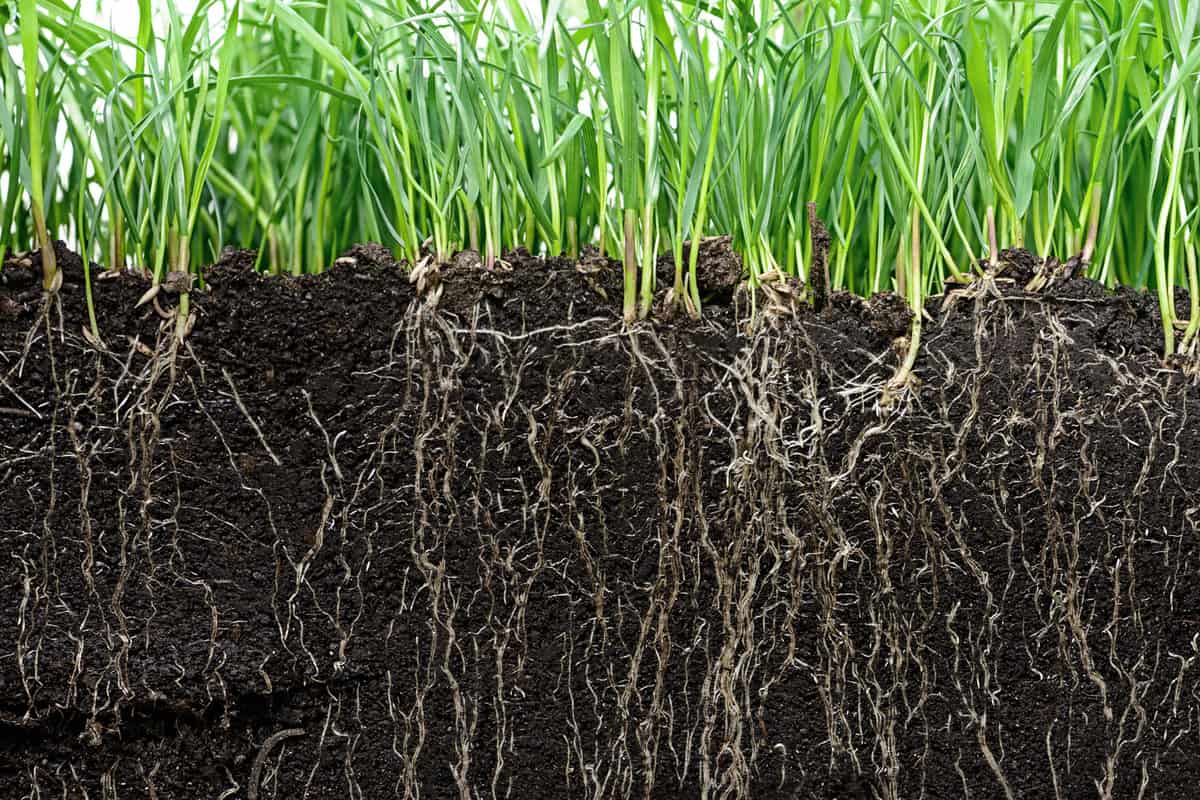
The roots of Bermuda grass can reach six feet or more, but in many instances, the root zone falls somewhere in between that depth and the first six inches under the soil. The depth relies heavily on the soil profile in the area.
This grass grows best in areas with slightly acidic acid, good drainage, and plenty of sun. Additionally, the optimum soil temperature for Bermuda grassroots is eighty degrees Fahrenheit.

Areas with levels of alkaline soil, slight shade, and cooler soil temperatures can cause stunted growth for the roots of Bermuda grass.
This grass can tolerate these conditions but will not have a root system as deep or strong when compared to the above optimal conditions.
Read more on our blog post, Can Grass Grow In Clay Soil? [Inc. The Best Kinds To Use]
Bermuda Grass Care
Once your Bermuda grass has been planted, there is some maintenance that comes along with it. This maintenance is relatively easy and only requires your attention a few times a year. Let's take a closer look at the details.
Water Requirements
We mentioned that Bermuda grass is drought tolerant. However, if you can keep up with recommended water requirements, you should. Bermuda grass needs about one inch of water per week to maintain its color in the spring and summer.
Different types of soil may change this requirement slightly. For example, grass in sandy soils requires more frequent watering.
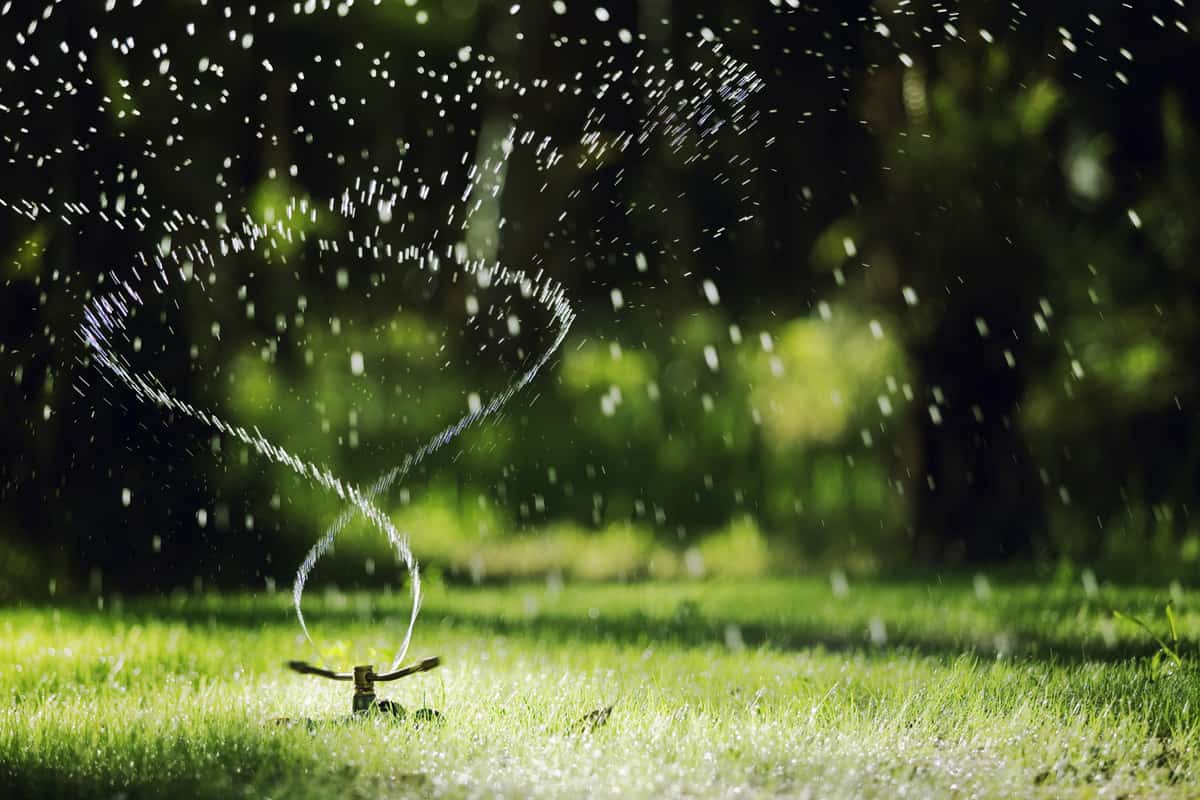
In the autumn months, you can start reducing the amount of water. It is possible to overwater Bermuda grass. Too much water can lead to compacted soil and increase the chance of disease forming in your grass.
If you live in an area with plenty of rain, you don't need to worry about keeping up with watering as much. In drier areas, you can consider installing sprinklers or ensuring you give your grass a deep soak with the hose at least once a week.
Mowing
When your grass reaches about three inches tall or higher, it is time to mow the grass. The ideal height for Bermuda grass is one to one and a half inches tall. You can begin mowing in spring once the grass is green.
You can take the extra step of removing dormant clippings. This will further reduce the chances of fungal diseases developing.

Furthermore, you want to use mowers with sharp blades every time and aim for frequent cuttings. Allowing your grass to get too long may hide the lower part of the blades from the sun, eventually causing them to turn brown.
You should avoid removing over one-third of the grass blades in a single cutting. In spring and summer, some grass requires a cut every five to seven days.
However, you should reduce the frequency of mowing in periods of drought or in other states of stress your grass may experience.
Fertilizing
Peak growing season is in the summer for Bermuda Grass. Due to the aggressive growth rate of this grass, it needs frequent feeding during these months. You should apply fertilizer once every 60 days until fall arrives.
You can use pre-made lawn-specific fertilizers. However, you can obtain better results by first testing your soil to see which nutrients and minerals your grass lacks. Then, apply only the necessary.
Aerate
You should aerate your soil between the months of April and July. Ensure this process is done when your grass is no longer dormant but before applying fertilizer. Aerating too early can increase the number of weeds present.
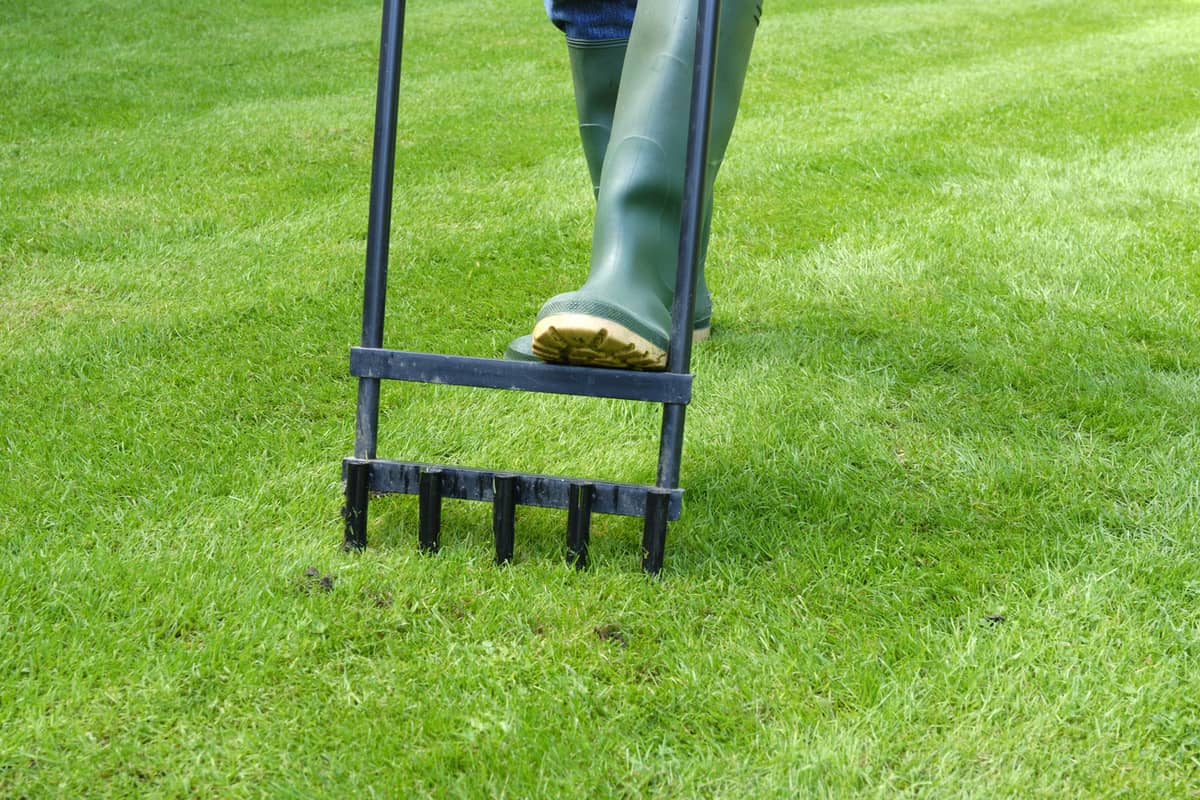
If your soil becomes overly compacted, you can aerate it twice a year. Complete the process once at the start of summer and again during the peak growing season. The two methods of aerating Bermuda grass include the spike method and core aeration.
Weed Control
While you want to control the weeds in your Bermuda grass, you must avoid applying too much herbicide. Herbicide should only be used a maximum of three times per year, but ideally only two times if possible.
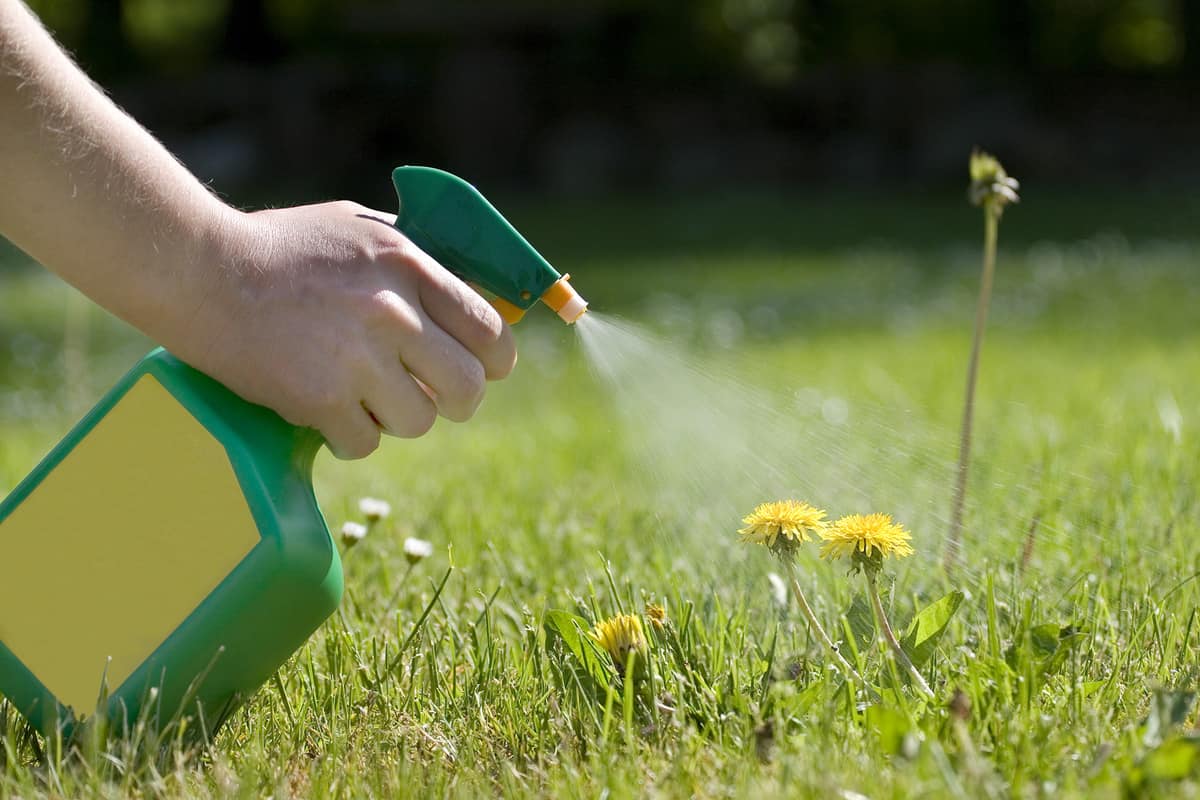
Pre-emergent herbicides can be applied right after winter. Post-emergent solutions are used if a weed problem develops in the growing season. When using post-emergent herbicides, always identify the species of weeds you are dealing with first.
Read more on our blog post, Why Is My Grass Dying In Patches?
When Is The Best Time To Plant Bermuda Grass?
The best time to plant Bermuda grass is in late spring. Planting should happen after any threat of frost has passed and daily temperatures are consistently warm. The cheapest way to cultivate Bermuda grass is from seed.
You can find Bermuda grass seed here on Amazon.
If you are working with a bare lawn, you can rake the soil and lay your seed. However, it is entirely possible to plant Bermuda grass over existing lawns. You will need to cut down the existing lawn as short as possible first.
Then, you can follow the steps of raking, evenly distributing your Bermuda grass seeds, and thoroughly soaking the soil.
Are Bermuda And Crabgrass The Same?
Bermuda grass gets with Crabgrass. Occasionally, the names get used interchangeably. However, these two types of grass are not the same. Crabgrass is an annual weed and a hard one to get rid of.
Crabgrass is fast spreading and attacks lawns that are cut too short or have bare turf areas. You may see smooth or hairy Crabgrass, but both types have flat, wide blades and tall clusters of flowers.
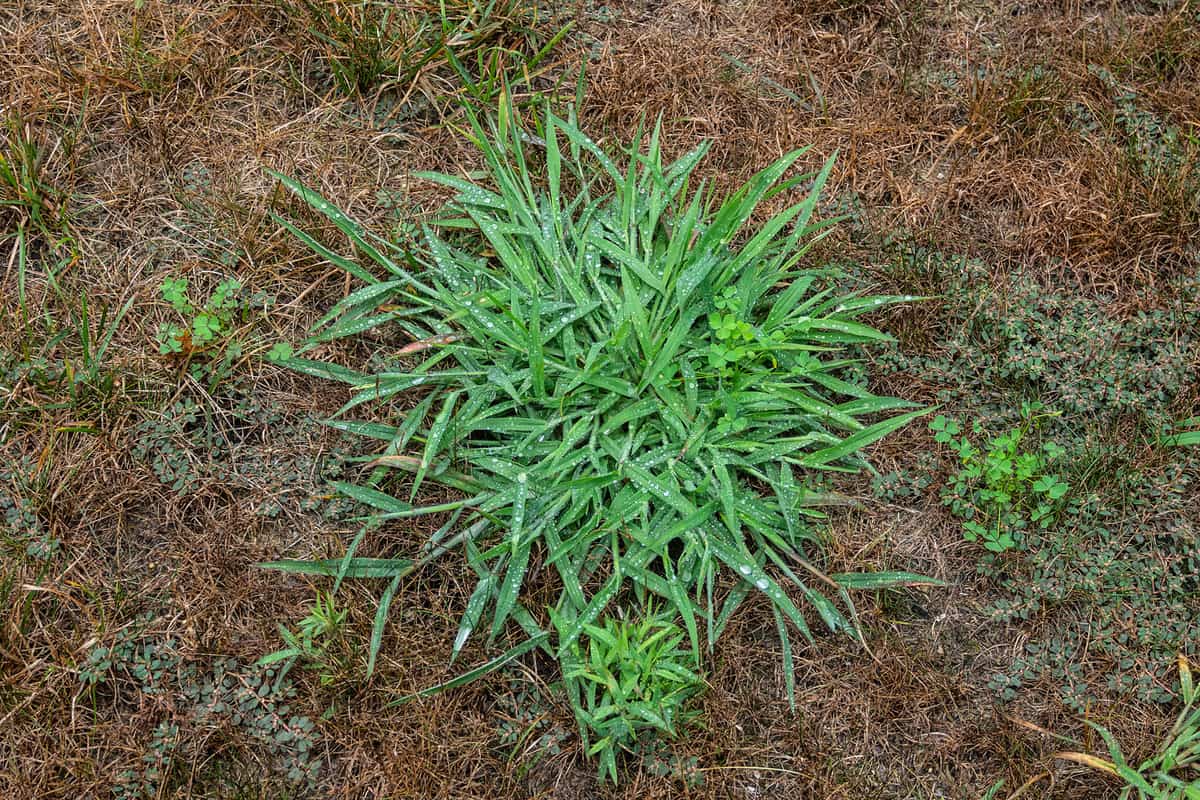
Keeping up with the health of your Bermuda grass and promoting deep root growth can help prevent the development of Crabgrass. Additionally, stay on top of bare areas within your grass.
If you have had crabgrass in the past or are particularly worried about it, you can even purchase herbicides that are specifically Crabgrass preventers.
Amazon offers Crabgrass preventer here.
Read more on our blog post, "9 Types Of Sod Grass That May Be A Good Fit For Your Lawn."
Which Lawn Grass Has The Deepest Roots?
Bermuda grass has the deepest roots out of any other type of lawn grass. Other species of grass cannot compete with the depth of Bermuda grass. Zoysia or Zoysiagrass is another deep-rooted turfgrass that only reaches depths of two feet.
Zoysia gets mentioned with Bermuda grass because while the root system is not as deep, Zoysia roots are thick and denser than other grasses. This dense root system allows the grass to be more efficient at soaking up water nutrients.
Most lawn or turf grasses have root depths of two to six inches. This is why even depths of just two feet can be considered deep root systems.
With every grass, the overall root depth and health rely on the soil and care you provide.
In Summary
The roots of Bermuda grass can grow as deep as six feet and even deeper. Your root health will depend heavily on the soil profile and how up-to-date you are on grass maintenance. We hope you found this article insightful when learning about Bermuda grass.
Are you looking for other types of grass with extensive roots systems? Have a look through our blog post, "8 Types Of Ryegrass [Do You Know Them All?]."


